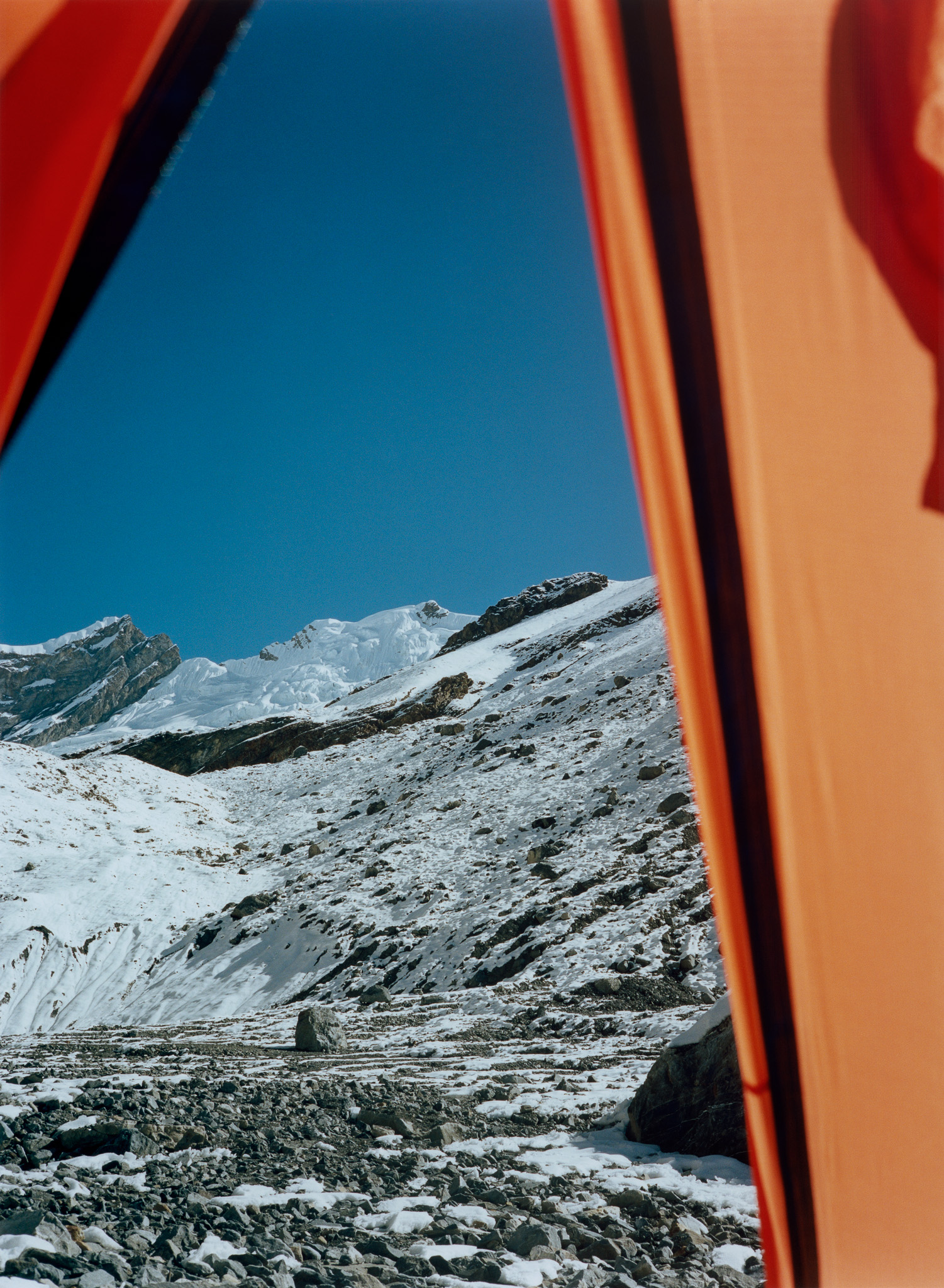PAST EXHIBITION
Taichi Kagami "Unclimbed mountain and non-(sight/site) topography,"

- Date
2023.5.17〜28
*The program has been extended until Friday, June 2.
Closed on Sun〜Tues (with exception of the last exhibiting day (5.28 Sun)
- Open
13:00-19:00
CALM & PUNK GALLERY is honored to present “Unclimbed mountain and non-(sight/site) topography,” a solo exhibition by Taichi Kagami from 5/17 (Wed) .
This exhibition spotlights Taichi Kagami’s experience of climbing Phungi (6524m), an unclimbed mountain in the Himalayas of Nepal, in the fall of 2022. Photographs, videos, and three-dimensional works created through this journey will be displayed. For his domestic production, he spent time at GASBON METABOLISM, a residential facility of CALM & PUNK GALLERY, as one of the production bases for this solo exhibition.
To date, Taichi Kagami has presented sculptures and photographic works based on his physical sensations of the world and the touch of the natural world. Meanwhile, he has been engaged in full-scale mountaineering activities, including winter climbing in Japan and expeditions to Island Peak in the Himalayas in 2018 and Denali in Alaska, in 2019.
In the fall of 2022, Kagami attempted to reach the summit of Phungi (6524m), an unclimbed mountain in the Himalayas of Nepal. The expedition began by gathering a limited amount of information, using Google satellite images and topographical maps to carve traces on the unclimbed snow ridge.
Artist Statement
Introduction
In the fall of 2022, I embarked on a 42-day expedition to climb Phungi (6524m), an unclimbed mountain in the Himalayas of Nepal. I have had my eye on this mountain since before the beginning of the COVID-19 pandemic and was finally given the chance to attempt the climb. Due to the inexperience of the team and our failure to acclimatize to the mountain’s altitude, we were unable to reach the summit. Amidst thin air, we continued to brake trail, but it was beyond our abilities, and we were eventually forced to abandon the climb at the 6150m point.
There is no physical viewpoint information on unclimbed mountains. Satellite images and topographic maps provide a rough outline of the mountain, but simply because it is unexplored, it vessels unlimited details and potential (unknowability). To climb this mountain, it was necessary to sensitize ourselves to the textures of the outside world by fully utilizing our senses and imagination that have been cultivated through our past experiences. We must acclimatize our lungs to sparse oxygen and let our bodies move along every uneven surface to harmonize with the outside world. By climbing the unexplored mountains, we are ascertaining the physical sense of our body and the world. I longed to trace the ”shape” and check the feel of each other.
Expansive mountain foot and representational topographic map
After caravaning through a series of bad weather conditions, my first encounter with Phungi from base camp surprised me with its ruggedness. There were no clear images of Phungi, and although I had priorly visualized the mountain based-off Google Earth images and information on its topographical map, the actual appearance of the mountain was overwhelming. Almost as if it shook the air, its vivid impression resonated within my body. The tension, combined with the frigid temperatures, seemed to constrict my veins and choked my airways.
A few days later, I crawled across the snow ridge I had been viewing from base camp and panted as I brake trail along. Starting from the display, then moving to a distanced visual observation, and finally to zero distance in the snow, the deeper I got into the bosom of the mountain, the more my senses were stimulated by all the information, and the more I felt my resolution increasing. Throughout the journey, a bird’s-eye view of the environment’s various aspects, such as landscape, weather, sun, wind, and maps, constantly came and went. Each of these elements could have a significant impact on how I behaved. The ebb and flow between images from my physical perspective and the mountain’s topological perspective symbolized my expedition. This contrast that transcends beyond space and time depicts the “shape” of the mountain and the body, accompanied by the sensation of touch.
This work is based on my expedition to Phungi, the unexplored peak does not represent the sight I witnessed, nor does it represent the site itself. It is an attempt to render a sensorial and representational topographic map of the traces carved on the edge of the mountains that were in contact with my body, the presence of the mountains that invaded my body, and the overlapping width of the mountain and body to produce a single line. Moreover, instead of limiting my experience of [climbing unexplored peaks] to a limited “object”, I emphasize the approach of finding connections between the surrounding environment and my body, thereby capturing an expanded version of the mountain base.
Through the repetition of on-site/non-site thoroughfare and image traffic, I intend to liberate the individual experience from its constraints as a time-and-space-limited existence and develop it into a place of contemplation.
Taichi Kagami
1993 Born in Kanagawa prefecture
2020 Graduated from Tokyo Art University, Master of Fine Arts, Sculpture Department
2022 Worked as an assistant at Tokyo Art University, COI Site
Taichi Kagami interprets the world and nature through his physical body and showcases these sensations in the form of sculpture and photography works. He has been engaged in full-scale mountaineering activities and has had experience in climbing mountains in the Himalayas and Alaska.
Fueled by an overwhelming interest in the relationship between people and nature, his works explore thematics relating to his own intense immersion experience within nature and the influences they have brought him through bodily sensations in comprehending the natural world.
His major exhibitions and residencies include ‘Kumonodaira Mountain Hut AIR Programme’ (Kumonodaira Mountain Hut, 2020), ‘Shiretoko, Forest Poiesis’ (Shiretoko Foundation, 2021), ‘Diffusion of Nature – Perspectives on Nature’ (The 5th Floor, 2022), ‘Ashigei 2022’ (former Shari-cho Town Hall,2022).